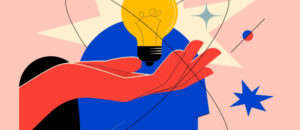How personalisation can provide a more inclusive benefits package for employees
- 4 Min Read
Discover why personalisation is now a vital part of the employer offering, a decisive break from the one-size-fits-all past
- Author: HRD Connect
- Date published: Oct 21, 2021
- Categories

Historically, group protection products – Life cover, Income protection and Critical illness cover – have fallen into the latter camp. (Except for the few who claim of course, then their value becomes very clear).
But it doesn’t have to be this way. Employees can realise the value of their benefits – whether they claim on them or not – by being given a choice; giving individuals the control and autonomy to tailor products and programmes to suit; and ensuring that their relevance as part of wider wellbeing strategy is understood.
Why personalisation supports inclusion
We all now expect targeted services and products in our day-to-day lives; from viewing recommendations on our television subscriptions to ‘frequently bought together’ suggestions when shopping online; all carefully selected by algorithms that take note of our likes and dislikes.
This – as a concept – shouldn’t be any different in the work environment. After all, you wouldn’t dream of paying an entire workforce a one-size-fits-all salary. So, why do we offer a one-size-fits-all benefits package?
To give employees a relevant and, with that, engaging and inclusive experience when it comes to benefits, personalisation is paramount.
In any one company in the UK right now, there could be up to three different generations, all with very different lives and responsibilities. Also, variations by gender, location, working hours and occupation. Employers might invest in generous benefit programmes, which could typically include Life cover and maybe some Income protection.
On the face of it, this looks great. But it affords no options to tailor coverage levels to individual circumstances and needs. So, it may suit some, but not all. For example, a single person who’s 25 with no dependants – will likely have vastly different needs to a 45-year-old who’s married and has dependants.
The upshot? Like the ill-considered birthday present, these potentially valuable benefits find themselves overlooked and forgotten.
How to ‘do’ personalised benefits
As we know, the traditional route to benefit choice is the Flex scheme, affording your clients’ employees a pot of cash on top of their salary and the opportunity to spend it on a choice of benefits during a benefits window of opportunity.
This means that employee engagement outside of that once-a-year Flex window tends to be very low, if at all.
Legal & General has launched Protect to help address these insurance challenges. The platform is mobile enabled too, which means it can be accessed anywhere, anytime. It’s therefore inherently engaging and can either complement Flex or work on a standalone basis. Employer-paid or voluntary, it gives employees the opportunity to dial up or down cover levels, according to their individual needs and as circumstances change. With Life cover, Income protection and Critical illness cover it also applies the kind of individual underwriting that retail customers enjoy, bringing more certainty at claim and therefore greater value.
Not only that, but the products come with embedded wellbeing support services, offering personalised support for all employees to be well, get better and be supported. This ensures that benefits have the potential (where underpinned with personalised communication) to no longer sit apart from wider wellbeing programmes.
Roger Fairhead, Group Reward Director at Legal & General, says that “the bad old days are gone, where employers had to prescribe a core level of cover, ignoring the very different needs and circumstances of employees across their workforce. Protect has enabled each Legal & General employee to choose a balance of cover that suits their individual needs at any moment in time, without impacting the cover level or premium for others, and at no additional cost to the company. That level of flexibility, with no additional cost, in my view, is not something that even Flexible Benefits packages can currently offer.”
To find out more about Protect click here.









